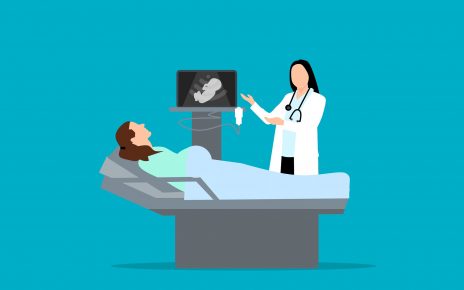Steven Gualdoni, PA-C, a 64-year-old physician assistant in Marquette, Michigan, planned to retire this June after four decades of caring for oncology patients.
But hospital administrators at UP Hematology Oncology Associates asked Gualdoni to stay on 1 more year. They couldn’t find someone to replace him.
“It’s difficult to recruit because, in a rural community like this, we’re thought of as being on the end of the world,” Gualdoni told Medscape Medical News.
Getting oncologists to move to Marquette, nestled in Michigan’s Upper Peninsula on the shores of Lake Superior, can be a hard sell. Gualdoni’s cancer clinic has been struggling to recruit new clinicians for years. The community of about 20,000 is far from major cities. Its winters are long and snow heavy. The isolation deters many early career oncologists.
Over the past two decades, the clinic’s staff have whittled down. Once a bustling practice with five full-time oncologists plus Gualdoni, UP Hematology Oncology Associates now houses two part-time and one full-time oncologist alongside Gualdoni and two recent hires, a nurse practitioner and a physician assistant.
The situation in Marquette is hardly unique. A workforce shortage in cancer care, which has been predicted for nearly two decades, has arrived full force in rural America.
Two thirds of rural counties lack an oncologist, according to the American Society of Clinical Oncology’s (ASCO’s) 2020 State of the Oncology Workforce in America report. That leaves about 32 million Americans without a cancer specialist nearby.
The pandemic has brought the oncology staffing crunch into sharper focus, as doctors opt to retire or leave medicine early and patients who delayed screenings or treatment in 2020 are now presenting with more advanced, resource-intensive cancers.
Rural areas are among the hardest hit by the oncology shortage, said Barbara L. McAneny, MD, CEO at New Mexico Cancer Center, which provides cancer care at multiple sites across the state.
The center’s clinic in Gallup, a small city of almost 22,000, is no exception. McAneny says the practice has faced chronic staffing shortages, and she sees similar scenarios playing out across the country.
“Every practice I talk to is recruiting for oncology, starting with physicians and then oncology nurses, physicists, social counselors, and financial counselors,” McAneny said.
A Long-Predicted Shortage Is Here
Some experts saw the oncology workforce problem coming years ago.
In 2006, ASCO released its first study in which it forecast a shortage of oncologists by 2020. The authors estimated that 10,422 oncologists practiced in the US in 2005. They predicted that by 2020, the number would increase to 12,547, while the demand for cancer services would soar by 48% — far outstripping the supply of doctors.
These predictions largely played out.
A 2020 ASCO workforce report revealed that 12,940 oncologists engaged in patient care that year, and the most recent 2021 snapshot estimated that 13,146 oncologists practiced in the US, with 1 in 5 nearing retirement age. Only 14.5% were aged 40 years or younger.
Rural areas, in particular, have struggled to retain staff. In the 2020 report, ASCO mapped out the locations of oncology practices across the US and found large pockets of Wyoming, Idaho, North and South Dakota, and other states with no oncologists.
These geographic disparities in access to cancer care tend to play out in cancer outcomes. Americans who live in rural communities are, for instance, more likely to die from cancer than those in urban areas.
The reasons are clear. According to a 2020 editorial in ASCO’s State of Cancer Care in America, the population in rural areas is typically poorer, older, and less adherent to preventive care — factors compounded by a lack of health insurance and fewer healthcare providers.
To complicate matters, the demand for cancer services has grown rapidly. The American Cancer Society estimated that there would be 1.4 million new cancer diagnoses in 2007 and 1.9 million in 2022. The result is that fewer providers are available to care for the country’s growing population of patients and survivors.
These workforce problems will most likely continue as the aging oncology workforce retires and fewer new doctors enter the field. Between 2013 and 2020, applications for subspecialty fellowships in oncology or hematology declined from 1037 to 947 while subspeciality applications in other areas, such as cardiovascular disease and gastroenterology, rose.
The number of applicants to surgical oncology fellowships has also plateaued over time, according to Kelly Hunt, MD, professor and chair of breast surgical oncology at MD Anderson Cancer Center in Houston and president of the Society of Surgical Oncology.
Even at MD Anderson, one of the largest cancer centers in the country, Hunt can see the effects of dwindling staff. Patients are waiting longer and traveling farther as they seek care away from home, she said.
But in rural communities in particular, “many of these hospitals are struggling financially or…facilities even closed down during the pandemic, which makes it even harder,” Hunt said.
Rural Oncology: A Tough Market
To manage the shortage, many practices are shifting work from physicians to midlevel providers or administrative staff, trying to reserve physicians’ hours for the care only doctors can provide.
Carolina Blood and Cancer Care Associates is “always looking” to hire more midlevel providers to offset some of the day-to-day workload on physicians, said Kashyap B. Patel, MD, the practice’s CEO.
“We’re trying to create a hybrid model with some sort of workflow realignment to cope with the demand until we find more sustainable permanent solutions,” said Patel, one of nine oncologists at the practice based in Rock Hill, South Carolina.
His patients come from a 200-mile radius, and half have a household income below $25,000. Some patients postpone care to continue working, reluctant to take even a half-day off to come to the clinic, he said.
The clinic offers subsidies to help patients cover costs, but this adds to the financial strain on the practice and makes it even more challenging to compete with the salaries offered to nurses and other staff from larger hospitals and locum tenens companies.
“It’s very hard to retain employees,” said Patel, the current president of the Community Oncology Alliance. “It’s almost like we’re sitting on the perfect storm between the employee shortage, COVID, advanced cancer patients, financial issues, and the payer policies.”
Harsha Vyas, MD, owner and oncologist at the Cancer Center of Middle Georgia in Dublin, Georgia, told Medscape Medical News that he has been trying to recruit more oncologists and midlevel clinicians for years. The staffing crunch was made worse during the pandemic when some employees left because of vaccination requirements.
“What was already a bad situation has gotten really bad,” Vyas said.
The region is also facing a shortage of primary care providers, he noted. As a result, patients are now presenting with unmanaged chronic diseases as well as cancer.
Vyas tries to help patients with their diabetes and hypertension, but these efforts take him away from providing cancer care.
“It’s not that I don’t want to manage or can’t manage primary care issues, but it’s just not feasible for a cancer physician to manage all [these] issues in every patient who walks in the door,” Vyas said.
He, too, relies on midlevel providers, but these staffers are only a short-term fix. Staffing has gotten so precarious that when Vyas’ partner retires, the center may have to close for good.
“I numerically cannot see the number of patients that we handle on a daily basis,” he said.
Choosing a Rural Practice
Charles Goodwin, MD, PhD, a recent graduate in hematology/oncology, bucked the trend of taking a job at a larger cancer center.
Goodwin works in Hancock, Michigan, a town of 5000.
He was drawn to the community because of its access to nature. The trade-off is that he works long hours in a busy practice without support from other specialists, an in-house social worker, and a nutritionist — perks he’d grown accustomed to during training.
Goodwin said he can’t see patients as often or quickly as he’d like. “You have to kind of muddle through and wing it as best you can,” he said.
But Goodwin understands the challenges of recruiting oncologists to rural areas. The job opportunities for recent graduates are enormous, making it harder for small communities to entice young talent, he said.
Goodwin says he receives 10 to 12 emails a day advertising oncology jobs and gets a recruitment phone call or text at least once a week.
In Marquette, Michigan, Gualdoni agreed to stay on another year, negotiating a contract to work fewer hours. He is now working at the broadest scope of his practice, helping patients with treatment decisions and end-of-life care. As a Catholic deacon, he also sometimes acts as the hospital chaplain.
But it is not enough to meet patient demand. The practice can no longer treat pediatric patients and sends leukemia patients out for infusion chemotherapy, a treatment too resource-intensive for the clinic. Gualdoni says some of his patients drive as many as 3 hours to the clinic in Marquette.
Still, Gualdoni plans to retire in spring 2023, after helping train the two new hires. He does not know whether the clinic will ask him to postpone retirement again.
“I’m hoping that, by that time, the new people will be up and running efficiently and they won’t need me,” said Gualdoni. But “it does give [me] a sense of uncertainty for the future.”
For more news, follow Medscape on Facebook, Twitter, Instagram, and YouTube.
Source: Read Full Article



